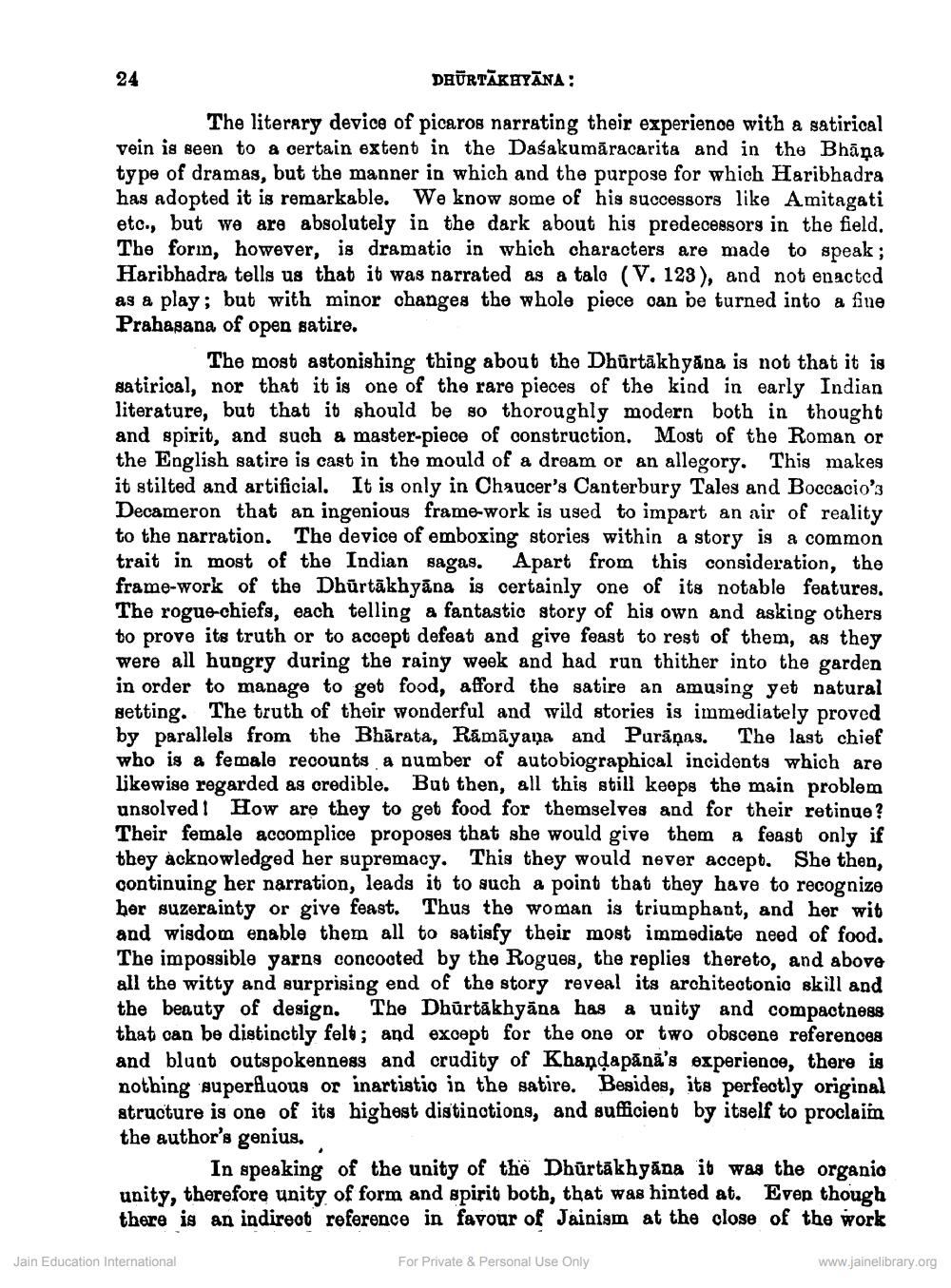________________
na master-Pmould of & Ors Canterbury art an air
24
DAĒRTĀKHYĀNA: The literary device of picaros narrating their experience with a satirical vein is seen to a certain extent in the Dasakumāracarita and in the Bhāņa type of dramas, but the manner in which and the purpose for which Haribhadra has adopted it is remarkable. We know some of his successors like Amitagati etc., but we are absolutely in the dark about his predecessors in the field. The forın, however, is dramatic in which characters are made to speak; Haribhadra tells us that it was narrated as a tale (V. 123), and not enacted as a play; but with minor changes the whole piece oan be turned into a fine Prahagana of open satire.
The most astonishing thing about the Dhurtākhyāna is not that it is satirical, nor that it is one of the rare pieces of the kind in early Indian literature, but that it should be so thoroughly modern both in thought and spirit, and such a master-piece of construction. Most of the Roman or the English satire is cast in the mould of a dream or an allegory. This makes it stilted and artificial. It is only in Chaucer's Canterbury Tales and Boccacio's Decameron that an ingenious frame-work is used to impart an air of reality to the narration. The device of emboxing stories within a story is a common trait in most of the Indian sagas. Apart from this consideration, the frame-work of the Dhūrtākhyāna is certainly one of its notable features. The rogue-chiefs, each telling a fantastic story of his own and asking others to prove its truth or to accept defeat and give feast to rest of them, as they were all hungry during the rainy week and had run thither into the garden in order to manage to get food, afford the satire an amusing yet natural setting. The truth of their wonderful and wild stories is immediately proved by parallels from the Bhārata, Rāmāyaṇa and Purānas. The last chief who is a female recounts a number of autobiographical incidents which are likewise regarded as credible. But then, all this still keeps the main problem unsolved! How are they to get food for themselves and for their retinue ? Their female accomplice proposes that she would give them a feast only if they acknowledged her supremacy. This they would never accept. She then, continuing her narration, leads it to such a point that they have to recognize her suzerainty or give feast. Thus the woman is triumphant, and her wit and wisdom enable them all to satisfy their most immediate need of food. The impossible yarns concocted by the Rogues, the replies thereto, and above all the witty and surprising end of the story reveal its architectonic skill and the beauty of design. The Dhūrtākhyāna has a unity and compactness that can be distinctly felt; and except for the one or two obscene references and bluat outspokenness and crudity of Khandapānā's experience, there is nothing superfluous or inartistio in the satire. Besides, its perfeotly original structure is one of its highest distinctions, and sufficient by itself to proclaim the author's genius.
In speaking of the unity of the Dhūrtākhyāna it was the organio unity, therefore unity of form and spirit both, that was hinted at. E there is an indirect reference in favour of Jainism at the close of the work
Jain Education International
For Private & Personal Use Only
www.jainelibrary.org




